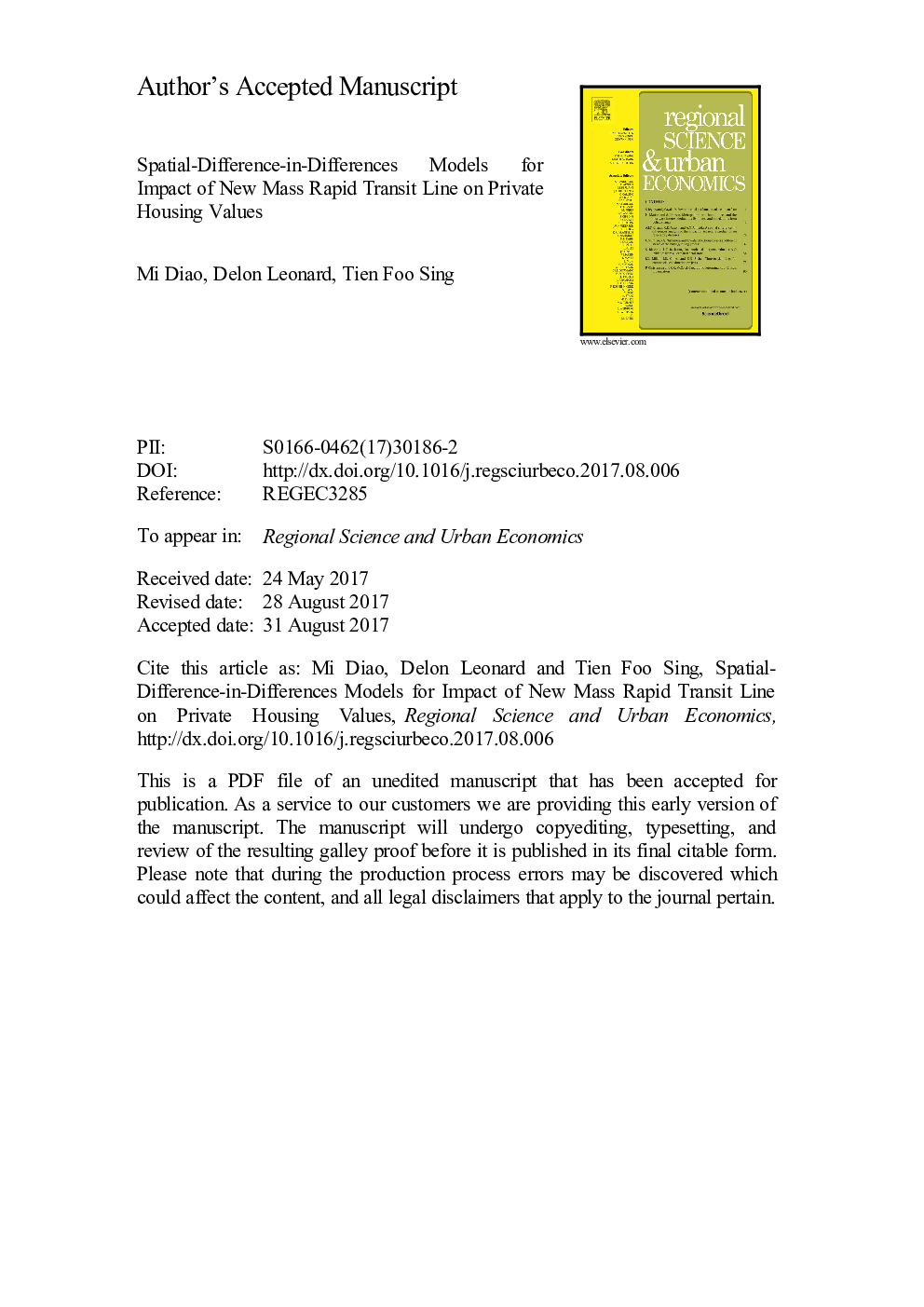| Article ID | Journal | Published Year | Pages | File Type |
|---|---|---|---|---|
| 5103659 | Regional Science and Urban Economics | 2017 | 47 Pages |
Abstract
This study uses the opening of the new Circle Line (CCL) in Singapore as a natural experiment to test the effects of urban rail transit networks on non-landed private housing values. We use a network distance measure and a local-polynomial-regression approach to identify the CCL impact zone with discontinuity in housing price gradient between a treatment zone and a control zone. We then estimate the spatial difference-in-differences models that account for spatial autocorrelation in housing price changes in the two zones “before and after” the opening of the CCL. We find that the opening of the CCL increases housing value in the treated neighborhoods located within the 600-metre network distance from the new CCL stations by approximately 8.6%, relative to other properties in the untreated neighborhoods controlling for heterogeneities in housing attributes and local amenities, and spatial and temporal fixed effects. We find significant “anticipation” effects as early as 1 year prior to the opening of the CCL line, but the effects diminish closer to the actual opening date. The results imply that the inter-dependent spatial structure between the treated and the untreated neighborhoods, if neglected, may lead to over-estimation of the capitalization effects of the new transit lines on housing values.
Keywords
Related Topics
Social Sciences and Humanities
Economics, Econometrics and Finance
Economics and Econometrics
Authors
Mi Diao, Delon Leonard, Tien Foo Sing,
